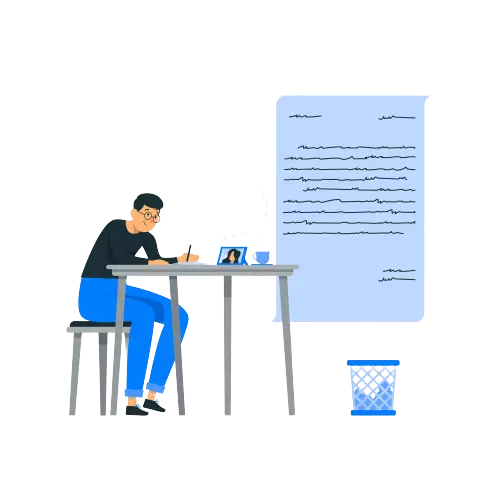Ah, the age-old battle of its vs it’s. These two tiny confusing words, separated by a mere apostrophe, yet capable of tripping up even the most confident writers. Fear not, fellow writers, for this blog post is your trusty compass on this path.
Understanding The Basics
Let’s start by clarifying the fundamental difference between “its” and “it’s.” “Its” is a possessive pronoun, indicating ownership or possession by something previously mentioned or easily understood. On the other hand, “it’s” is a contraction, a shortened form of “it is” or “it has.” The apostrophe in “it’s” replaces the missing letters from the original words.
Here’s where things get interesting. Choosing between its and it’s boils down to one simple question: Is it showing ownership or is it a contraction?
- If your word talks about something belonging to it, use its. No ifs, ands, or apostrophes.
- If your word is a shortened form of “it is” or “it has,” use it’s. Let the apostrophe be your guide.
Common Mistakes And Misconceptions
One of the primary reasons writers make mistakes with “its” and “it’s” is the confusion caused by other possessive pronouns like “his,” “hers,” and “theirs.” Unlike these pronouns, “its” does not require an apostrophe. Many people mistakenly insert an apostrophe in “its” when intending to convey possession, but this is a grammatical error.
Consider the following examples:
-
- Incorrect: The dog wagged it’s tail.
-
- Correct: The dog wagged its tail.
In the second example, using “it’s” creates confusion and alters the intended meaning. Always remember, if you can replace “its” with “his” or “her,” and the sentence still makes sense, then you are using the correct form.
Examples Of Its
- The cat licked its paws. (The paws belong to the cat, hence the possessive “its”)
- The book revealed its secrets. (The book possesses secrets, hence “its”)
- The storm unleashed its fury. (The storm possesses fury, hence “its”)
Examples Of It’s
- It’s raining cats and dogs! (Shorthand for “it is raining cats and dogs”)
- It’s been a long day. (Shorthand for “it has been a long day”)
- It’s not what it seems. (Shorthand for “it is not what it seems”)
Hire A Professional Editor
- Expert UK Editor
- Grammar and Punctuation
- Precision and Clarity
- Zero Plagiarism
- Excellent Customer Service

Tips For Proper Usage Of Its Or It’s
Here are some tips that will help you choose between what to use.
Remember The Basics
- “Its” is possessive, indicating ownership.
- “It’s” is a contraction for “it is” or “it has.”
Avoid Apostrophes For Possession
Unlike other possessive pronouns, “its” does not require an apostrophe.
Replace With “It Is” To Check
If you are unsure whether to use “its” or “it’s,” try substituting “it is” in the sentence. If it makes sense, use “it’s”; otherwise, use “its.”
Proofread Carefully
When reviewing your writing, pay special attention to instances of “its” and “it’s” to catch any potential errors.
Practise With Examples
Engage in exercises or write sentences using both “its” and “it’s” to reinforce proper usage.
Impact On Clarity And Professionalism
Using the correct form of “its” and “it’s” is more than just a matter of grammar; it significantly influences the clarity and professionalism of your writing. Misusing these words can lead to confusion and, in some cases, alter the meaning of a sentence.
In professional and academic settings, attention to detail in language usage is crucial, and mastering the distinctions between commonly confused words is a mark of a skilled communicator.
Beyond The Basics: Fun Facts And Food For Thought
- Historical Tidbits: The distinction between its and it’s emerged in the 17th century, with early printers often using both forms interchangeably.
- Global Variations: In some languages, like Latin and Polish, there’s only one word for both the possessive and the contraction, creating less confusion but also less expressive nuance.
- The Power of Apostrophes: While apostrophes can cause headaches, they also play a vital role in language, adding clarity and meaning where simple letters wouldn’t suffice.
Frequently Asked Questions
Table of Contents
“It’s” is correct when you mean “it is” or “it has.” Example: “It’s a beautiful day.” “Its” is correct when indicating possession. Example: “The cat chased its tail.” Ensure you use the appropriate form to convey the intended meaning and maintain grammatical accuracy.
Use “its” as a possessive pronoun to indicate ownership or association by something previously mentioned or understood. Example: “The company increased its profits.” Ensure correct usage by avoiding an apostrophe, distinguishing it from the contraction “it’s,” which stands for “it is” or “it has.”
The correct word for “its” is a possessive pronoun used to show ownership or association. It denotes that something belongs to or is connected with a subject mentioned earlier. Ensure proper usage by not including an apostrophe, distinguishing it from the contraction “it’s,” which stands for “it is” or “it has.”
“It’s a pleasure to meet you.” In this sentence, “it’s” is a contraction representing “it is.” The apostrophe replaces the missing letters. Proper use of “it’s” enhances clarity and conciseness, particularly in casual or conversational contexts, where contractions are commonly employed for efficiency and fluidity.
“It’s” is a contraction that shortens either “it is” or “it has.” The apostrophe in “it’s” replaces the letter ‘i’ in “it is” or ‘h’ in “it has.” This contraction is commonly used in both written and spoken English to convey these meanings more succinctly and informally.
No, “it’s” is not used for plurals. “It’s” is a contraction for “it is” or “it has.” When referring to possession in the plural form, use “their” or “theirs” instead. For example, “The dogs wagged their tails” is correct, while “The dogs wagged it’s tails” is incorrect.






